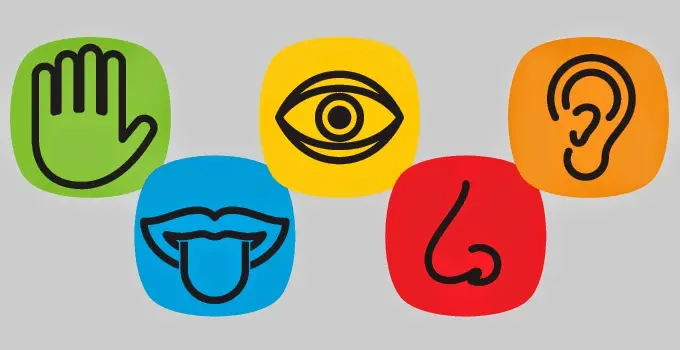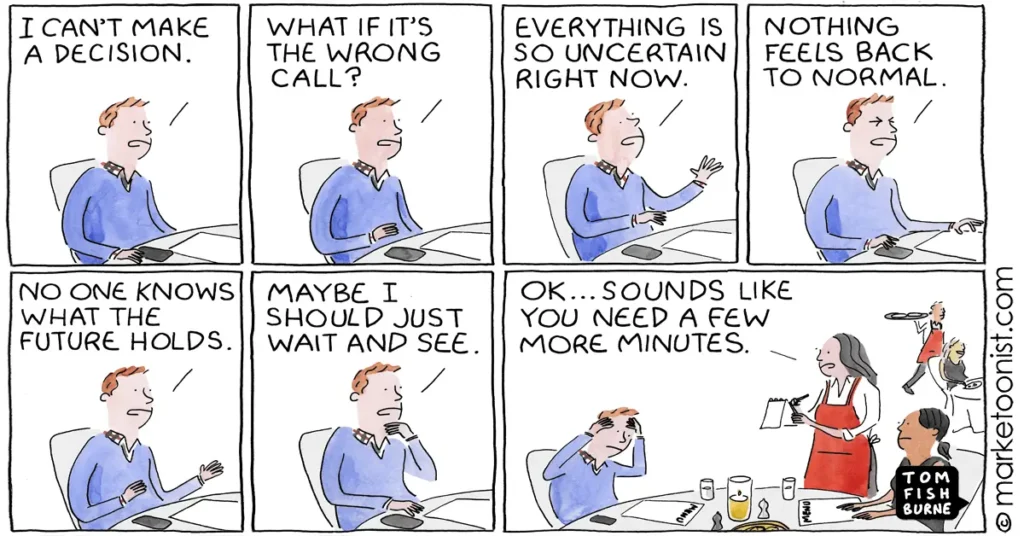Marketers can track everything, whether it’s views, social shares, or ROI. However, emotional resonance is one important factor that marketers cannot currently assess using simple analytics.
Neuromarketing, often known as consumer neuroscience, is the study of the brain in order to anticipate and potentially affect customer behavior and decision-making. Neuromarketing technique is simply the use of neuroscience in marketing.
Brain imaging, scanning, or brain activity measuring technology is used to assess a subject’s reaction to particular items, packaging, advertising, and other marketing sectors.
However, the subject’s brain reactions to the research stimuli may not be consciously observed. As a result, neuromarketing technique is thought to be more illuminating than self-reporting questionnaires, focus groups, and other “conventional” market research methods.
What is Neuromarketing?
Technically speaking, neuromarketing technique is a technique that employs neuroscience and cognitive science expertise to precisely identify client requirements, interests, and preferences. It investigates customers’ reactions to marketing stimuli and evaluates unconscious reactions to certain advertising campaigns, packaging, design, and so on.
The neuromarketing technique aids in developing effective marketing campaigns and tactics that appeal to the target audience.
Elements Used for Neuromarketing
1. Eye Tracking
Even if you haven’t paid much attention to eye movements and changes, they might reveal insights into your business. Customers’ preferences for advertising, product packaging, and design may be determined through eye-tracking. This neuromarketing technique approach can help identify which components of your online and in-store advertisements get the most attention.
Your team may determine the items that help stand out and captivate the audience by monitoring the gaze of customers. Gather a group of study participants to determine whether your company’s colors, typography, and graphics appeal to customers. Examine clients attentively to see if they were influenced by your advertisements in a business. You’ll know what to do with your advertisements, packaging, and branding when you figure it out.
2. Pupillometry
Pupillometry is a simple procedure that examines the size of a person’s pupils to determine whether or not they are dilated. This statistic is significant since a person’s pupils dilate when they stare at something they appreciate.

This may be important in marketing since it not only indicates whether or not consumers appreciate a product but can also be used to improve a variety of things, including websites and packaging. A visually appealing website or advertisement will produce a higher rate of public involvement. As a result, brand recognition and sales may grow.
Fortunately, pupillometry is a low-cost procedure. It may also be used with other neuromarketing techniques, such as eye tracking, biometrics, etc.
3. Biometrics

Skin conductance, heart rate, and breathing are all measured using biometrics. They disclose the degree of interaction and if the consumer’s response is good or negative, allowing the ad content to be improved.
4. Facial Coding
Neuromarketing technique has made the art of understanding facial emotions, a science. neuromarketing techniques, much as they may be used to detect eye movements and brain activity, can also be used to “read faces” with extraordinary accuracy.

It works like this: whether we smile, exhibit rage, or produce any other type of facial emotion, we use our muscles to do so. These minute muscle movements may be properly recorded using sensors to identify expressions and emotions that people aren’t even aware they are feeling.
Of course, a modest smile or grin does not reveal the entire truth of how a person is feeling at the time, but facial coding assists marketers by reading and analyzing minor emotions that offer valuable information about people’s feelings and opinions. At times, they also predict the future behavior that can follow.
5. Sensory Marketing
We may influence customers without their knowledge by utilizing neuromarketing technique findings. Sensory marketing may take several forms, including touch, sound, and scent. However, they are all centered on persuading the audience to reflect on a certain brand in the midst of sensory stimulations.

The smell is an excellent example of sensory marketing in action. It can often be as simple as influencing a customer’s senses with the perfect aroma to persuade them to make a purchase. A popular example is supermarkets that increase the fragrance of fresh bread to lure customers to the bakery department and persuade them to buy.
Sounds are another excellent resource for neuromarketing techniques. It has been demonstrated, for example, that when consumers hear high-pitched noises, they pay greater attention to brighter-coloured things and darker-coloured objects than if they hear low-pitched sounds.
6. Psychological Tricks (FMRI & EEG)
FMRI and EEG are the two most prevalent technologies for scanning the brain. The former (functional magnetic resonance imaging) uses high magnetic fields to follow changes in blood flow throughout the brain, and it is performed while the patient is lying within a machine that collects continuous measurements over time.

An EEG (electroencephalogram) measures brain-cell activity using sensors put on the subject’s scalp; it can follow variations in activity over fractions of a second, but it is ineffective at pinpointing the exact location of the activity or detecting it in deep, subcortical parts of the brain (where a lot of interesting activity takes place).

An FMRI can see deep into the brain, but it is time-consuming and only records activity for a few seconds.
For many years, brain imaging remained solely the domain of academics and scientists. Neuromarketing has used the extraordinary power of FMRI imaging to provide insights into human behavior and consumer behaviors.
One use of FMRI in neuromarketing techniques is to compare advertising campaigns before releasing them to the broader population. Participants in one trial saw three distinct advertisements for the National Cancer Institute’s telephone helpline.
The ad campaign that aroused the most brain activity in a specific region resulted in considerably more calls to the helpline. This revolutionary technique opens up new possibilities for identifying advertising strategies that will actually interest the audience.
Takeaway: FMRI offers enormous promise for improving marketing strategy, boosting engagement, and driving action.
Techniques of Neuromarketing
1. Effective Packaging
After going over the full aisle of chips, choose the one that has brilliant colors and appeals to your eyes. Electroencephalogram (EFG) has been employed by companies to determine the important features of their packaging that influence the user’s choice. In its packaging, Chips Ahoy conducted neuromarketing techniques tests.
They discovered that customers had a negative emotional reaction to the phrase “resealable” on their packaging since it was difficult to read. Furthermore, the test respondents’ reactions to the monotonous chocolate chip cookie images on their boxes were indifferent. As a consequence, Chips Ahoy altered its packaging to include the word “resealable” more prominently and a more appealing cookie image.

The logo became more noticeable. The color of the packaging was also changed. The packaging color was also modified to light blue to seem more casual and in line with the logo. So, the takeaway is that if consumers enjoy your packaging, it will stick with them and draw them to your goods.
2. Simple Font
Make use of basic typefaces. Experiments at the University of Michigan by Hyunjin Song and Norbert Schwarz revealed that the kind of typeface had an effect on customers. In his chapter “Brainfluence in Print,” author Roger Dooley stated, “If you wish to convince a customer, client, or donor to complete any type of activity, you should define that assignment in a straightforward, easy-to-read font.”

All website-related text, whether forms or instructions, should be in the most basic and easy-to-read typeface possible. If it is more difficult to read, fewer individuals are likely to respond to your call to action.
2. Headlines Attractive

Everyone understands that headlines are important in neuromarketing techniques. So make your headlines appealing, concise, and elegant. It is critical to surprise the human mind. Nowadays, most businesses employ the “Hippocampal Headline” strategy. This strategy entails employing ordinary language with a twist. Such titles quickly stimulate the brain, making the headlines more appealing and memorable.
3. Positive Vibe
A grin is well-known for attracting attention, and pictures of happiness produce endorphins. People become more involved and open to society as a result. Being approachable, open-minded, and joyful allows you to connect with the audience. It will foster trust and openness.
If you include an image of a happy person in your advertisements or social media postings, it will help to form a favorable impression of your company. People are more inclined to buy from your firm.
4. Pricing
The price of a product or service impacts its income and profit. According to neuromarketing techniques studies, clever pricing methods make a significant impact. Should I round or not round? That is a difficult question.
Rounded pricing is easier for the brain to process, but odd prices require more effort from the brain. In their advertising, brands and corporations can choose to employ emotion, rational reasons, or a combination of both.
5. Decision Paralysis

Consumer behavior studies might sometimes contradict our earlier assumptions. According to Columbia University research, having too many options may actually turn off potential clients. Using several settings, they discovered that displays with a wide range of alternatives were less likely to cause people to stop.
The lesson to take away here is, Less is more, and too many options might overwhelm clients.
6. Color Theory

Color theory is an important but frequently ignored aspect of design. On a basic level, warm colors, such as red and yellow, are assertive, uplifting, and dynamic, whereas cool colors, such as blue and green, convey tranquility and feel more restrained. This is certainly relevant for branding. On an emotional level, in terms of how customers react when they see it; but also on a practical level, in terms of market differentiation.
A corporation may gain a significant competitive advantage by essentially ‘owning’ a color in its industry, establishing instant identification – in certain circumstances even without a logo or even a mention of its name. That is the power of color in action.
Many AI-based online image editing free tools also use neuromarketing techniques to offer more color grading & visually appealing features.
Examples of Neuromarketing
1. Microsoft
👉 Microsoft is doing a neuromarketing techniques study to determine how engaged players are when using an Xbox. Microsoft collaborated with EmSense to place EEG caps on gamers and display their adverts on the gaming system. It monitored which areas of the brain were aroused by the advertisements.
According to Michael E. Smith, a neuroscientist at NeuroFocus, ads that activate many areas of the brain are more likely to have viewers go out and buy the promoted goods. Microsoft’s objective is to get marketers to purchase 30-second commercials on Xbox games.
2. PayPal
👉 Neuromarketing techniques can help you spot customer patterns. While businesses frequently want to project a sense of safety and security, clients may be looking for speed and efficiency. PayPal discovered promising ease research that demonstrated that the promise of ease stimulated the brain more than the promise of security. They used this data to attract more customers to their online payment service by promoting their quick payment mechanism.
We can learn that, while it may appear that highlighting a product’s safety and security will win customers over, you may instead want to convey the impression that your product is speedy and efficient.
3. Yahoo
👉 Yahoo evaluated a 60-second television commercial using neuromarketing. The advertisement showed cheerful, dancing individuals from all over the world and was part of Yahoo’s new branding effort, which aimed to attract more users to the search engine.
Before showing the commercial on TV and online, Yahoo conducted some EEG testing. The advertisement performed well on neuromarketing technique tests, demonstrating activation in regions governing memory and emotional thought.
4. Coca-Cola
👉 Two Red brands stand out in their respective areas, while the first is possibly the world’s most instantly recognised brand in any industry. Red is so firmly tied with Coca-Cola that rumor has it that it rebadged Santa Claus to match (unfortunately, this is an urban legend).
Recently, more minimalist packaging and advertising have been reduced to that basic red, with the traditional flourish of white.
Even the design of video games has begun to incorporate psychological concepts, particularly the use of reward and punishment to create games that are interesting to play and keep players interested.
The activity may also raise the brain’s dopamine (a neurotransmitter) level by enhancing the reward offered by the game. This neurotransmitter is linked to pleasure and good feelings, which may strengthen the desire to keep playing.
The key is to provide them with a delightful experience to keep them loyal to the brand and buy more of it.
Conclusion
To sum up, it’s getting farther and harder to get through the noise of marketing, therefore marketers that understand the root causes of human emotion have a big advantage. The usefulness of neuromarketing strategies lies in their ability to be included in both inbound and outbound marketing campaigns.
We can see that the brain responds in the same way subconsciously to everything from spraying your business with a certain scent to using baby pictures in advertising.
Neuromarketing techniques are crucial for marketers to use if they have the funds to do so in order to understand their clients’/customers’ preferences better.


